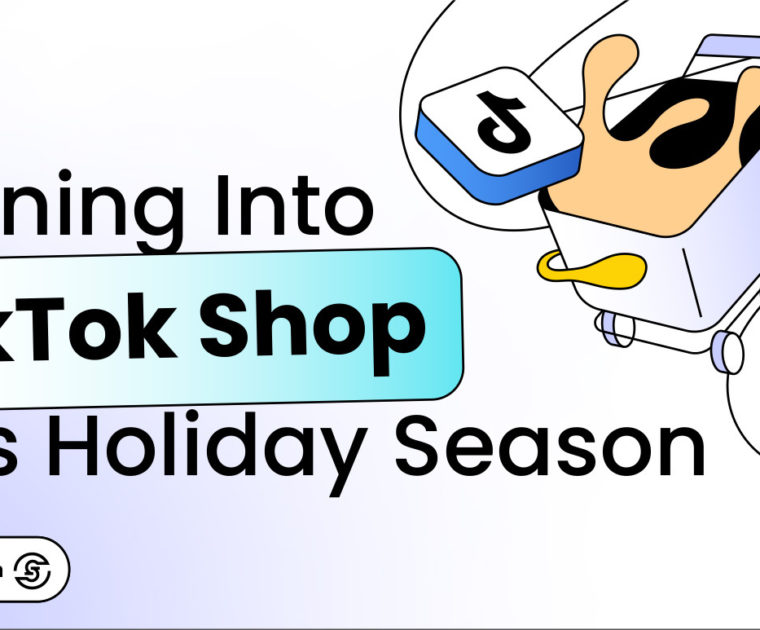Originally published October 2023
In 2025, “Just posting” on social isn’t a strategy—understanding how interest and social graphs drive visibility is.
Social media isn’t the same place it was in 2020. Platforms have shifted from connection-based feeds to behavior-driven recommendation engines. That means where and how your content shows up depends less on who you follow, and more on what people feel like scrolling.
Listen to a recap of this article
Why We’re Having a Conversation About Social Algorithms
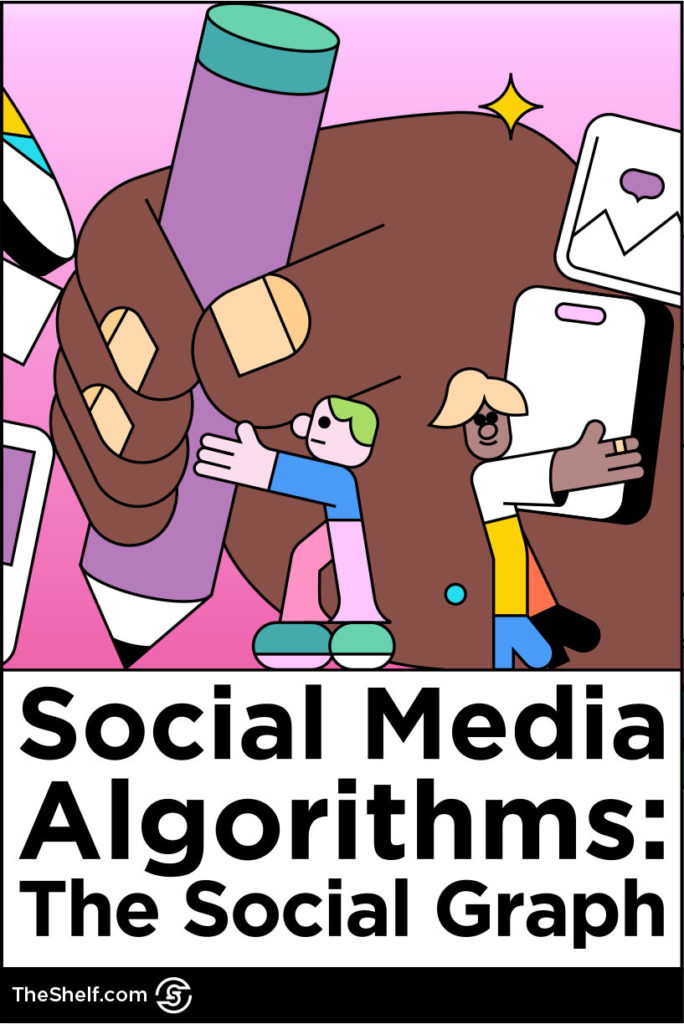
Right now, nearly every company you can think of is using social media to reach their audience. Statista published a stat that said 9 in 10 marketers in companies with 100 or more employees are leveraging social media marketing in one way or another. Social media is not only one of the most effective marketing channels (according to 77 percent of social media marketers polled by HubSpot), it’s also one of the most reliable customer acquisition channels for brands.
- 68 percent of the world’s population is online
- 64 percent of the people in the world (that’s 94 percent of Internet users, give or take) are also active on at least one social media platform (Data Reportal)
- 51 percent of US consumers have engaged in social commerce, meaning they’ve made a purchase through social media, up from 47 percent just two years ago, according to Mintel
Social media presents brands with a unique opportunity to reach audiences organically. But also to forge connections and compose a brand narrative that clearly articulates and reinforces its values and its value.
Upwards of 68 percent of companies are adding an influencer marketing strategy to their digital marketing efforts. But even without partnering with influencers (and allowlisting influencer posts to boost the reach), a brand’s ability to consistently create social media content that resonates with consumers really is its best chance at building brand loyalty.
Social Media Is About More Than Following Friends and Funny Videos
I recently updated one of our seminal posts, entitled “Is Influencer Marketing Dead?”. As I was raining down verbal blows upon the heads of influencer marketing haters and naysayers, something kinda stuck out in my mind as I researched stats. Here’s the thoughtful blurb that will serve to set the stage and provide context for this article on social media algorithms:
Right now, young adults (ages 16 to 30) spend an average of 1 hour more on social media per day than the average person. Half (friggin’ HALF‼️ ) of Gen Zers spend 4 hours OR MORE on social media every single day. That kind of time investment leads me to believe that the way younger consumers are using social media is more encompassing than the way older consumers social. For example:
- Search: About 47 percent of 16 to 34-year-olds use social media as a primary source of information when researching brands. Meanwhile, 44 percent rely on search engines.
- Spying: 82 percent of adults ages 16 and over use at least one social media platform to follow or research brands.
- Connecting: For Generation Z, social posts aren’t a highlight reel like they were for Millennials. They’re the social media equivalent of their train of thought. Their posts and stories are a window into their lives and passions.
- Living a lifestyle of sharing and influencing: 41 percent of Gen Z describe themselves as video content creators, signaling a shift to a culture of creativity and influence.
- Vitality: One in five consumers and one in three Gen Zers turn to social media for health advice.
- Personal Style: 52 percent of US adults and 77 percent of Gen Z consider social a trusted source for beauty and personal care info.
- Wellness: 47 percent of Gen Z typically learns about personal wellness products on social media.
- Innovation: 65 percent of Gen Z surveyed say they used a filter, feature, or effect on a video app over the past year. And 60 percent of Gen Zers surveyed say they’re open to watching content from creators who use AI to generate their content.
If younger consumers are spending more time online, it makes sense to me that they are also using social media to fulfill more of their needs in key areas such as self-expression, friendship, work, health, entertainment, and completing daily tasks (like shopping and figuring out what to do for the weekend).
In order to reach them, you have to make your brand a welcome addition to their feeds by creating the right content for the right platforms. And that means understanding the algorithms. Or partnering with creators who do.
The Interest Graph vs. The Social Graph
Simply put, social media algorithms are sets of rules used to determine how and when to surface content. They use different user signals to determine what content to display. The recipe for how these signals are weighted changes from platform to platform, as well as within a single platform to power different features.
(Much respect to our Dev team – I know that this is an oversimplification. You guys are nothing short of wizards. All of yuz!)
For the purposes of this article, we’re going to look at two primary types of social media algorithms: the interest graph and the social graph. As a general rule, let’s concede that socially-driven algorithms prioritize content based on what the content is and who it’s from while interest-driven algorithms prioritize content based on how the user interacts with the content and how they’ve engaged with similar content in the past.

So, with Facebook’s socially-driven algorithm, I get to see my octogenarian great-uncle in his Sunday’s best, and it warms my heart. Love that dude. On TikTok, even though I may follow Unc, I never see his content. But I see a lot of content from the “Cocaine Bear” guy because he’s hilarious and just about the only type of content I engage with on TikTok is funny videos.
By the way, that movie’s not suitable for family movie night…. just a heads up. Learned that the hard way. Ya can’t unsee it, guys.
Algorithm #1: The Social Graph (aka the friends and family plan)
Remember a few years ago when our social media feeds were made up of posts from the people we follow? You had to be super careful about who you followed, and who you engaged with. Owners of new social accounts were hellbent on getting as many followers as they could to ensure their content was visible. The larger your network, the greater your potential reach.
Well, that’s because social feeds surfaced content based on a user’s network, followers, and connections. This was social media’s Social Graph era.
What Is the Social Graph?
The Social Graph is an algorithm that prioritizes social media feeds to display content from the people and topics/hashtags followed by the user.
Socially-driven algorithms also display content based on the interests of the accounts users are connected to on a platform. Until about three years ago, most social media platforms prioritized the socially-driven feed, with one exception – TikTok.
Algorithm #2: The Interest Graph (aka social media as entertainment)
In 2020, TikTok went from being the reincarnation of the pre-teen music app Musical.ly to being the app that helped many of us brave the pandemic.
When Instagram became a go-to news source for young adult social media users – especially as social activism gave way to in-person protests during the summer of 2020 – TikTok grew in popularity, in large part, because it was the opposite of that. TikTok was a chill place that kids had been using to entertain themselves with unproduced, unbeautified short-form videos. No pretense. No soapboxes. No stress.
TikTok’s personalized feed was a stark departure from the feeds delivered to users by other social media platforms. The primary difference was that TikTok’s algorithm prioritized showing content that aligned with the personal interests of each user over just showing the content posted to the platform by accounts in a user’s network. Enter the era of the Interest Graph.
What Is the Interest Graph?
The Interest Graph is an algorithm that focuses on building the feed by analyzing the various interests, preferences, and behaviors of the individual users on the platform.
Instead of prioritizing content posted by the other accounts a user follows, interest-driven algorithms recommend content based on the topics, hashtags, and accounts that users engage with.
How the Interest Graph and Social Graph Work Together
While there are certainly more algorithms than just these two, my goal here is to get you to draw the proverbial line in the sand about interest-driven algorithms vs socially-driven algorithms.
Both matter. They work together.
And whether you’re building a content catalog or mapping out a plan for your holiday influencer campaigns, you’ll want to have a pretty good understanding of how these two main algorithms-slash-concepts factor into your planning process.
Yes, TikTok’s Interest Graph Changed the Way We Social
TikTok’s interest-driven algorithm fundamentally changed how people use social media AND it changed how social media works. It was freakishly addictive, becoming the favorite pastime of hundreds of millions of people during the lockdowns. TikTok’s team mastered the attention graph while no one was looking and burst into the Western market, spreading across generations faster than any social media app had ever done prior.

TikTok gave way to the advent of videos going viral, even when posted by accounts with little to no following. TikTok also created the viral sound, which popularized unknown artists and birthed and/or jumpstarted the careers of acts like Lil Nas X and Lizzo.
Social Media Is In the Entertainment Business
One of the major shifts that happened in social media over the last few years has to do with the type of content users want to see. Take a look at this Notion doc my team and I put together on Gen Z content preferences. A lot of this stuff I pulled from YouTube’s Culture and Trends Report in 2023.
Horror content, armchair traveling, gaming, mental health content, rewatching favorites, watching short-form teasers of long-form content…
You’ll notice that a lot of these content preferences could easily be filled by streaming services. But more likely than not, younger social media users will get their fill by scrolling through a social media feed powered by the interest graph.
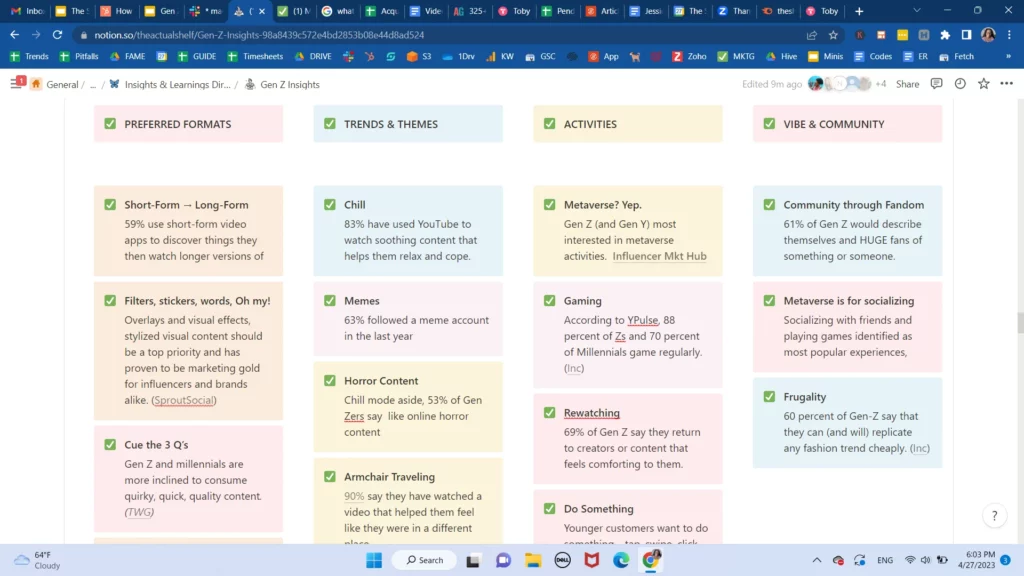
Today, social media is progressively taking over the role of traditional television as the main outlet for entertainment with younger consumers. According to a recent report from the Daily Mail, individuals ages 15 to 24 in Britain now dedicate more time to using TikTok than watching television. Similar trends can be observed among teenagers and young adults in the United States, as indicated by statistics published by Insider Intelligence.
According to Data Reportal, platforms like TikTok and YouTube are outshining streaming giants like Netflix, Prime Video, and Disney Plus. More time, more users, and more entertainment are attributed to social media platforms — that’s the new norm.
But You Still Need the Social Graph for Relationship-Building
While the Interest Graph focuses on interests and preferences, the Social Graph delves into the relationships between individuals on social media. It represents the connections, interactions, and networks that people form online, allowing marketers to understand the social dynamics and social influence within their target market.
So, no – the Social Graph isn’t a thing of the past. An influencer with a strong Social Graph is more likely to have a loyal and engaged following, leading to higher engagement rates and a more successful marketing campaign. Plus, there are popular apps that still power features with socially-driven algorithms, even when prioritizing interest-driven content in-feed.
Instagram’s Stories feature is a prime example of the social graph. Originally modeled after Snapchat’s socially-driven disappearing posts, Instagram Stories are short-form videos that can only be seen by a user’s followers. Compare that to Instagram Reels, which are public-facing short-form videos that are displayed in-feed based on a user’s interest.
Cool facts, Sorilbran. Now, why should we care?
Well, different users engage on social media platforms in different ways. According to Instagram Head Adam Mosseri, teens and younger consumers spend more of their Instagram time in DMs than in Stories. And they spend more time in Stories than they spend looking at content in their feeds (which is where static posts and Reels live).
“Take out all the text,” Mosseri said in a recent interview on the 20VC Podcast. “There are more photos and videos shared in DMs than there are shared in Stories. And there are way more shared in Stories than there are in-feed.”
If you happen to know or live with a Gen Z teen or young adult, you may have noticed that for this cohort, phone numbers are not the go-to method of keeping in touch – Instagram is. When younger social media users meet someone they want to keep in touch with, they exchange Instagram handles, not phone numbers.
Phone numbers are typically reserved for potential business opportunities, or between people who are in established friendships.
Why not exchange TikTok handles? Because TikTok’s interest-driven algorithm doesn’t prioritize personal connections. So, it’s unlikely that new acquaintances would be able to strengthen their relationship beyond that initial contact because there’s no guarantee they’d ever see one another’s posts on TikTok.
Younger consumers use Instagram Stories as a means to build their communities and get to know one another. Instagram is where potential friendships can start to blossom and where ill-fated relationships go to die (or be unfollowed, as it were).
It’s also worth noting that this behavior can also be seen in Gen Alphas (the under-13 crowd). Younger Gen Alphas will often exchange Roblox display names instead of phone numbers. Middle school kids? Well, they keep in touch on their phones, but not by making a phone call; they message friends on WhatsApp.
Coincidentally, WhatsApp is the second most popular social media platform, after YouTube, and ahead of Instagram, Facebook, and TikTok. Check Slide 318 of the Digital 2025 April Global Statshot Report.
To achieve the best results in your social media marketing efforts, consider the interplay between the Interest Graph and the Social Graph.
Here’s a Simple Use Case for Social vs Interest Algorithms
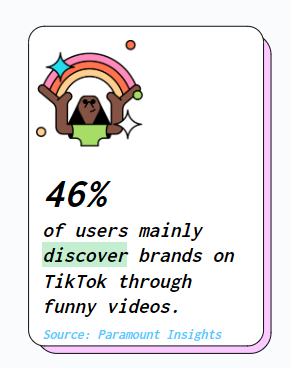
So, how do you use this information in your campaign? Let’s look at a couple of scenarios that work in some influencer marketing ideas.
Scenario 1: Let’s say you have launched an influencer campaign to seed brand discovery and keep your brand top-of-mind. You can work with a content creator who may not necessarily be influential in your vertical, but they have a track record of creating really great, high-value content that the algorithm loves to recommend.
In this scenario, you may choose to partner with a larger influencer who specializes in crafting stories that offer a high entertainment value since your goals include increasing your visibility and boosting brand recall.
You swant your brand to be seen and remembered, and you want to make sure the influencer’s content triggers a positive sentiment (👈🏽 important) so that when consumers see your subsequent branded content or your ads, your marketing efforts pull them deeper into your funnel and gets them closer to being open to taking an action later.
Here’s why I’m thinking this way…
- 71 percent of consumers are more likely to purchase when referred by social media.
- 58 percent are more likely to have positive vibes about an ad on TV, Facebook, or YouTube if they’re first exposed to the campaign via an influencer’s post.
- Influencer promotions generated 87 percent higher memory and 277% more emotional intensity when compared to ads on television.
- 43 percent of Gen Zers say one of the top ways they like to engage with their interests is through stories posted by brands and influencers on social media.
Right? So, influencer content can set the mood and establish good feels for your entire campaign. And then there’s this little stack of stats:
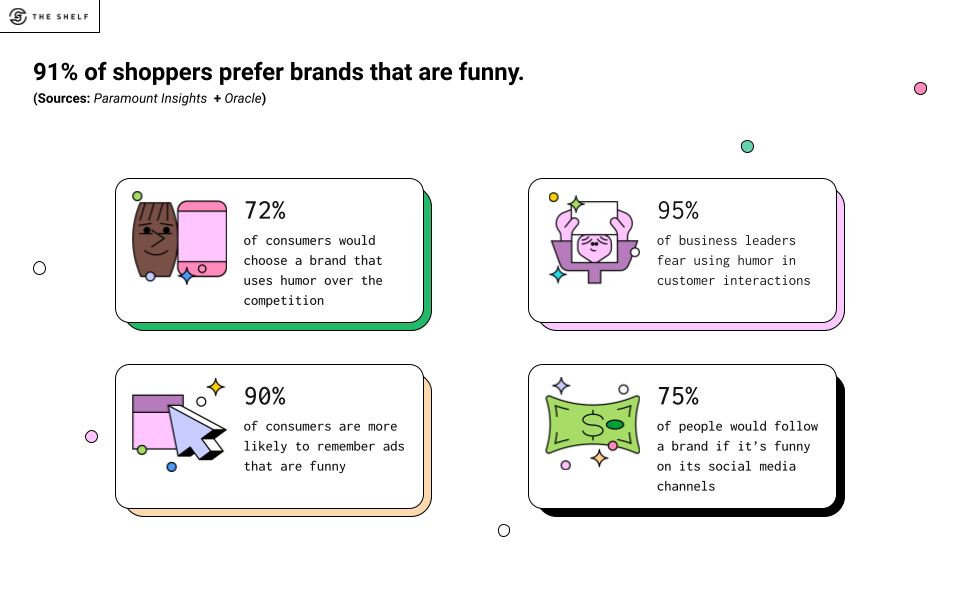
With that in mind, let’s look at a really great example of a creator who leads with high entertainment value. Comedian Trey Kennedy is a genius when it comes to super-short skits that are hilarious and relatable. His Instagram feed is full of them. This particular post is from Trey’s paid partnership with [yellow tail].
Scroll through the comments. Notice how Trey’s followers know they’re seeing a sponsored post. And frankly, they don’t care because the content was so entertaining. The post generated over 27k engagement actions, and was viewed more than 732K times on Instagram alone. (And yes, this campaign was one of ours.🥳)
Scenario 2: Now, let’s say you’re looking at a more traditional type of influencer marketing activation, targeting young adult consumers with a mid-funnel campaign designed to get them to take a specific action. In this case, you may choose to work nano, micro and/or mid-tier influencers who have built their audiences on Instagram. You also want to make sure they have credibility and influence with their audience in a vertical or category that aligns with your product.
Why? One of the benefits of working with nano, micro, and mid-tier Instagrammers is that those influencers are more likely to have established relational equity with their audiences. This relational equity (i.e. influence) enables influencers to have their recommendations looked at more closely and taken more seriously.
Here’s a fun stat that may help tie this together: Forty percent of millennials have reported saying they feel like influencers know them better than their own friends.
So, it remains true that in the realm of influencer marketing, the Social Graph plays an important role in determining the effectiveness of brand collaborations. By analyzing the relationships between influencers and their followers, you can get a pretty good idea of an influencer’s authority, credibility, and ability to drive engagement.
.
Creating Synergy between Social Media Algorithms
To achieve the best results in your social media marketing efforts, consider the interplay between the Interest Graph and the Social Graph. Brands have a chance to uncover new opportunities for content creation and influencer partnerships by learning how to think beyond the product, the mission, and the branded language to take a data-driven approach to marketing on social media.
By comprehending the nuances of these algorithms and their impact on your marketing efforts, you can stay ahead of the game and build marketing campaigns that consistently deliver on your most important KPIs. And isn’t that all any of us wanna do?

About the Author
Sorilbran Stone | Visibility Strategist
I serve as the resident content strategist and the official Content Marketing Coordinator at The Shelf. Marketing is my happy place. I’m as happy looking at analytics as I am actually creating a thing. I focus a lot on dreaming up and implementing the best ways to create, publish, and distribute content that builds our brand and gets our readers to do a thing




